Here are 10 things you should know about actress and director Kinuyo Tanaka, born 109 years ago today. She worked with many of the greatest directors in Japanese cinema.
Tag: Kinuyo Tanaka
Five dazzling divas
Any movie buff in the tri-state area with even the slightest interest in classic Japanese cinema should plan on spending a good deal of time on Houston Street the the next three weeks.
Beginning Friday, April 1, Film Forum will be presenting a don’t-miss opportunity to immerse oneself in pictures made by the greatest Japanese film directors of the 1930s, ’40s, ’50s, and ’60s and starring five of Japan’s most acclaimed actresses: Kinuyo Tanaka, Isuzu Yamada, Machiko Kyo, Setsuko Hara, and Hideko Takamine.
 |
||||
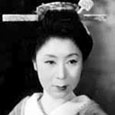 |
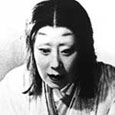 |
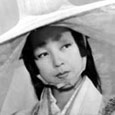 |
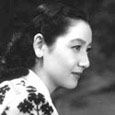 |
 |
 |
 |
 |
 |
 |
This quintet of amazing actresses are being feted by Film Forum with a retrospective that features films by such giants as Akira Kurosawa, Yasujiro Ozu, Kenji Mizoguchi, Keisuke Kinoshita, and Mikio Naruse.
The festival’s highlights are too numerous to cite, but we are especially fond of Takamine’s work, and she was best known for her work with the great Naruse, who, along with Kurosawa, ranks as our favorite Japanese director, but honestly, you could make your way to Film Forum on a daily basis throughout the retrospective and experience no regrets.
But if you can make only a few bills, we recommend the Naruse double-bill of Yearning (1964, Takamine) and Repast (1951, Hara) on Tuesday, April 5; Naruse’s Okaasan (Mother, 1952, Tanaka), the double bill on Saturday, April 9, of Kurosawa’s Rashomon (1950, Kyo) and Mizoguchi’s Ugetsu (1953, Tanaka); Ozu’s Tokyo Story on Sunday, April 10, and Monday, April 11 (1953, Hara); Naruse’s Flowing (1956, Yamada, Takamine, Tanaka) on Tuesday, April 12; and … well, honestly, it’s a pointless exercise to try to recommend particular highlights. The entire retrospective is worth experiencing.
Clear your schedule, buy a Film Forum membership (you’ll save on admission), and save us a seat on the aisle, please.
Goodbye to another glorious gal
The lovely and talented Hideko Takamine passed away last week at the age of 86. She worked with such well-regarded directors as Akira Kurosawa and Yasujiro Ozu, but she is best remembered for the work she did with another of our favorite directors, Mikio Naruse.
We were saddened to learn of her passing. We had always intended to send her a fan letter (though a response would not likely have been forthcomng), and we regret not having done so.
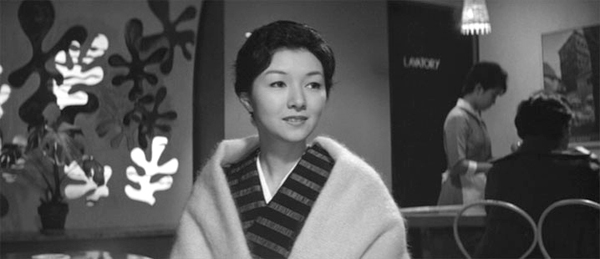
If you’re not familiar with her work, some of it is available on DVD. Criterion has two of her pictures in their catalog — When a Woman Ascends the Stairs (directed by the aforementioned Naruse) and Twenty-Four Eyes, directed by Keisuke Kinoshita.
Some years ago, NYC’s Film Forum held a four-week retrospective featuring 31 of Naruse’s pictures. We approached the festival’s first film with low expectations, simply because we knew nothing of Naruse’s work, though we have an affinity and affection for classic Japanese cinema.
We were immediately won over, however, and ended up attending all but one of the 31 screenings. We found Naruse’s elegant tales of average people struggling to get by both moving and heartening. Naruse was a man who saw the sadness in the world and wasn’t afraid to depict it, but there’s a resolve in his work and in his characters that is also hopeful.
In immersing ourselves in Naruse’s oeuvre, we gained an appreciation for many of the actors who made repeat appearances in his pictures, and it was Ms. Takamine, along with Setsuko Hara and Kinuyo Tanaka, who most impressed us. Takemine appeared in at least twelve of Naruse’s films over the years, generally portraying, as Ron Holloway once wrote, “one from the underprivileged classes and usually a tragic figure who endures despite the whims of fate.”
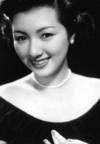 |
 |
 |
 |
 |
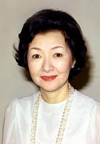 |
Takamine’s first screen appearance came in 1929 at age 5, and she continued working until 1979, certainly a impressive and admirable run for any actor. She was a beloved figure in Japan, leading some to compare her status there to that of Mary Pickford in the United States, but others have suggested that Katherine Hepburn is a better comparison, given that Ms. Takamine proved to be just as self-sufficient and independent in her handling of her career and personal life as the plucky and iconic Hepburn. She first defied convention by eschewing a studio contract and going independent in 1950 and then, after she married screenwriter Zenzo Matsuyama in 1955, she followed her own path by, as Dave Kehr wrote in his New York Times obit of the actress, “continuing to work as an actress rather than withdraw into domestic life.”
Shirley Temple might also be a worthy comparison, given Ms. Takamine’s popularity as a child star in Japan.
Ms. Takemine, who also authored a number of published essays and books, led a more private life upon retiring. She and Matsuyama divided their time between Tokyo, where she no doubt was recognized everywhere she went, and Hawai’i, where she enjoyed a bit more anonymity.
A marvelous actress, gone but not forgotten.
